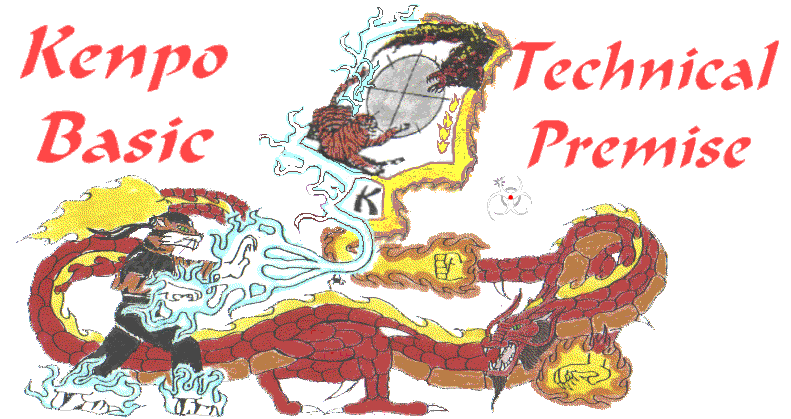Below you will find links to Self-Defense Techniques, forms, and sets
for
each belt level. To get things moving, follow the links below to
find each belt level:
Here's some
information on how
to read the short hand technical references:
Lead
:
a reference to the hand or foot in front depending on your stance
position
Opposite
: your
other hand or foot depending on your stance position
A change in
the hand or foot
used during the technique will be referenced by the other
designation.
Should there be no change, there will be no mention of it in the
premise.
/:
illustrates "with" or more
than one piece of motion happening at once
1. or 2.:
for the two man techniques;
1. will designate the first opponent, 2. the second
( ):
illustrate optional motion
concepts which can be implemented into the technique
Now
for some more information. This section, to be found within the
Dragon
Tales e-zine, will be a rather large and ongoing venture from all of us
at Zine. It will be completed with the aid and acknowledgment of
the Golden Tempest Kenpo Studio, since they are one of our affiliates
and
already have a curriculum on computer. Here you will find a list
of every American Kenpo Karate technique under Senior Grandmaster Ed
Parker's
system of self-defense. Well, every technique from Yellow Belt to
2nd Degree Brown Belt, due to the fact that after 2nd Degree Brown is
attained,
the techniques go back to the Orange Belt Techniques with
Extensions.
Essentially this means from 1st Degree Brown, 1st Degree Black Belt,
and
beyond, the techniques covered go back to Orange Belt material and so
forth,
covering more advanced concepts to be utilized in the original
techniques.
The techniques themselves will be kept in the order of operation, if
you
will, prescribed by Mr. Parker within his Infinite Insights
literature.
The sets, and some of the forms within the system shall be slightly
different
and brought forward to the site in more the order taught within the
Golden
Tempest studio.
Now, some of the folks at Dragon Tales have always hated the idea of
going
to a website and only finding a list of the techniques with nothing
else
behind them. Or finding an onslaught of "by the book" techniques
in some estranged order. So, we've once again taken things a bit
further. Just to be honest and forthright, you are not going to
find
in-depth, complete analysis of all 200 or so techniques and each form
at
each belt level. Quite frankly, we don't want to take that kind
of
time nor do we have that right, truth be known. And it would be
rather
silly, since everything is interpretive anyways. So, the idea we
worked out in our little "jam session" is to go into the basic idea,
premise,
or drill if you will, found inside each technique. This will also
encompass the forms and sets.
As we said before though, this isn't going to be anything
in-depth;
however, these sections aren't going to be simplistic either. These
basic technical premise descriptions are designed to be short and
sweet,
and more importantly to the point. They won't have every single
move and method of operation in enormous detail. What these pages
will have are technical descriptions of the motion involved and ideas
behind
the techniques, forms, and sets in a drill type format. In
essence written in short-hand, these descriptions were actually
incredibly
difficult to write given that we had to find a fairly easy to
understand
way to relay the information in condensed form without loosing a lot in
the translation. We wanted them to be as easy for every
skill
level to read as possible.
These pages will be changed often, so feel free to check back and see
what
has been added. Or they make a wonderful quick-study reference,
which
was why they were designed in the first place.
|
